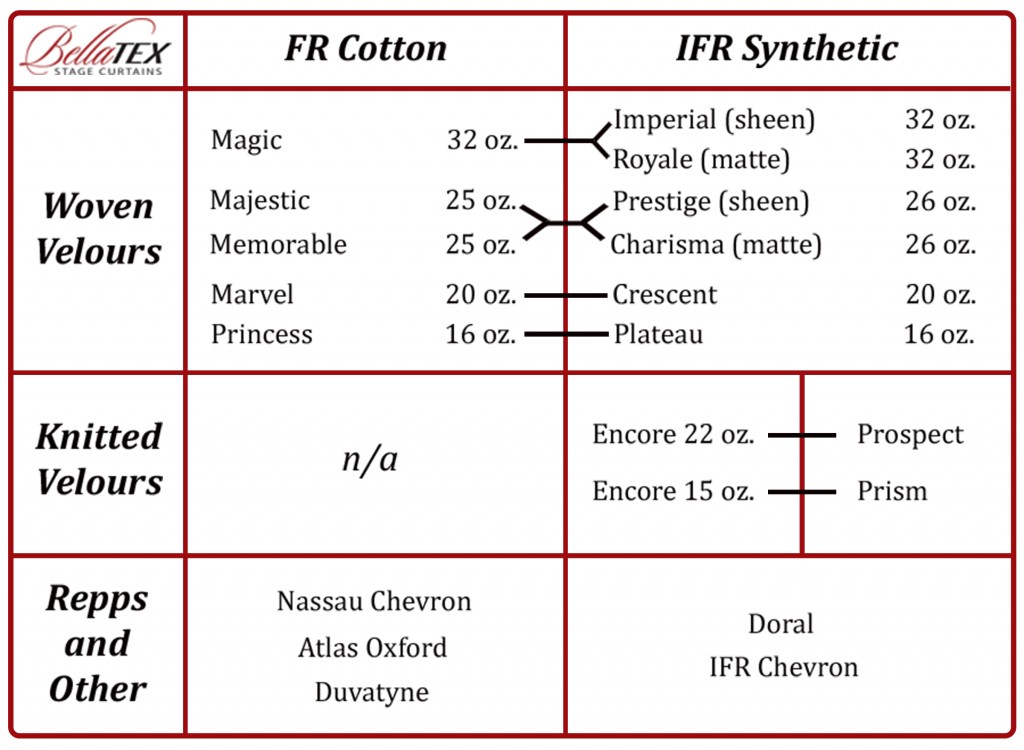Cotton vs. Synthetic Fabric

“What is the difference between cotton and synthetic fabric?”
All fabrics can be divided into two main categories: Cotton or Synthetic. Until about 15 years ago, stage curtains were all made of cotton. But when synthetic fabric came along, the possibilities for stage curtains were obvious and since then synthetics have been the preferred fabric for use in theatres.
One primary difference between cotton and synthetics is flame retardancy. Cottons have been chemically treated to make them Flame Retardant (FR), while synthetics are Inherently Flame Retardant (IFR). “IFR” means the FR properties are inherent to the yarn, rather than being contained in a topical treatment which can breakdown or be removed. If FR Cotton gets wet, it must be dry cleaned and then retreated for fire retardancy. IFR Synthetics can be cleaned with a damp cloth, and never need retreating for flame retardancy. Cotton, while widely used years ago, is seldom used today. For more on Flame Retardancy and Flame Testing, visit our website or view our video on Flame Testing.
There are other important distinctions too. IFR Synthetic is more opaque than cotton. It is more durable and less prone to damage because of high humidity environments. Occasionally you will hear someone expressing preference for cotton because of better sound absorbancy. While, technically, cotton is slightly more sound absorbent than synthetic, the difference is so minimal that it does not make a perceptible difference in outcome. This argument alone is not a reason to choose cotton over synthetic.
Most synthetics will cost a little more than an identical cotton version. But since synthetics tend to be more opaque, a lighter weight fabric can often be used. Typically, this entirely offsets the cost difference and has the added benefit of reducing curtain weight, making the curtains easier to handle, and causing less wear on tracks and rigging.
Both FR Cotton and IFR Synthetic are available as woven velours with the same fabric weights and color choices. However, there are no cotton knitted velours. Knitted velours are prevalent for use in stage curtain construction and are highly opaque, durable, soft, and less expensive than woven velours. For more on Woven Vs. Knitted Velour, see our blog post here.
Here is a chart which can help you see the relationships between common fabrics used in stage curtain construction:
Contact BellaTEX Stage Curtains at 1-800-372-3373 for more information on choosing the right fabric for your projects.

